52 Rolls Project - W2+3, Warsaw with Kodak Portra 400 and Fuji Superia 1600 Part 1
I’ve just finished scanning the photos from my holiday in Warsaw with my girlfriend Julia, which spanned weeks 2 and 3 of my 52 rolls project. All photos were taken with a Leica M6 TTL through a Summicron 35mm ASPH. Three rolls were Kodak Portra 400 and one roll was Fuji Superia 1600 that had expired over five years ago and hasn’t been kept in a fridge.
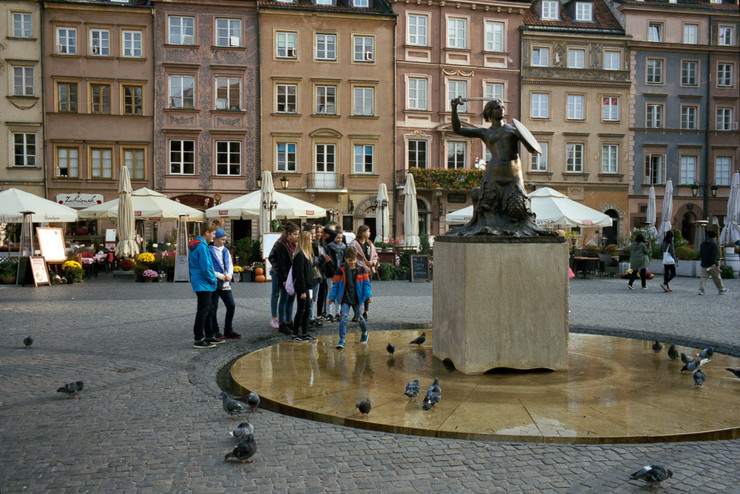
Warsaw has had a particularly violent and sobering recent history. It's suffered through a huge amount of destruction, but looking at it you might not notice that anything's out of the ordinary. The city is in a constant stream of construction and renovation, giving it a chance to reshape itself into a particularly modern place to live. We had five nights here, and I’ll try and explain some of the interesting parts through a selection of photos below. The photos themselves turned out fairly well, and the M6 is a joy to use, but as you’ll soon see the expired Fuji film had a lot of noise.
We had good weather for the first half of the trip, but it was overcast and rainy for the second half. The lighting was very odd the whole time - bright but diffuse, filtered through a constant amorphous cloud layer. This led to a strange orange tint and very poorly defined shadows.
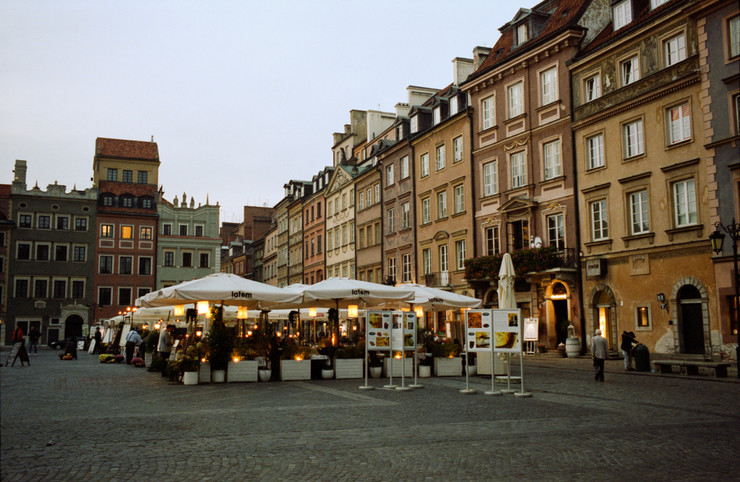
Our apartment was in the Old Town, which is somewhat of a misnomer that leads into a discussion about one of the things that makes Warsaw interesting: it was almost entirely destroyed during World War Two. Look closely at the image above. It might look like a central European town square, but most of the buildings lack any kind of intricate stonework or variations in theme that are the hallmark of a city centre that has evolved over time. You can see this in the next image: a lot of the decorations on buildings are just painted on.
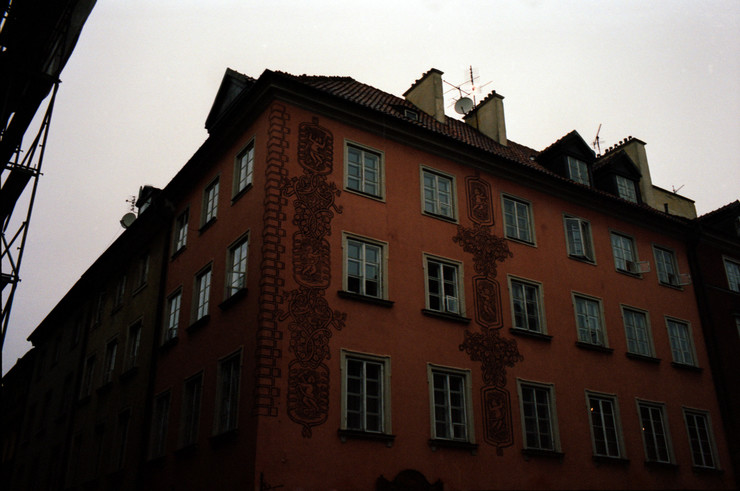
What’s more, a large number of buildings in the old town square (and generally around Warsaw) were clad in scaffolding. Outside the center this might be just normal wear, but in the old town I wasn’t expecting to see it. It’s likely because October isn’t high tourist season.
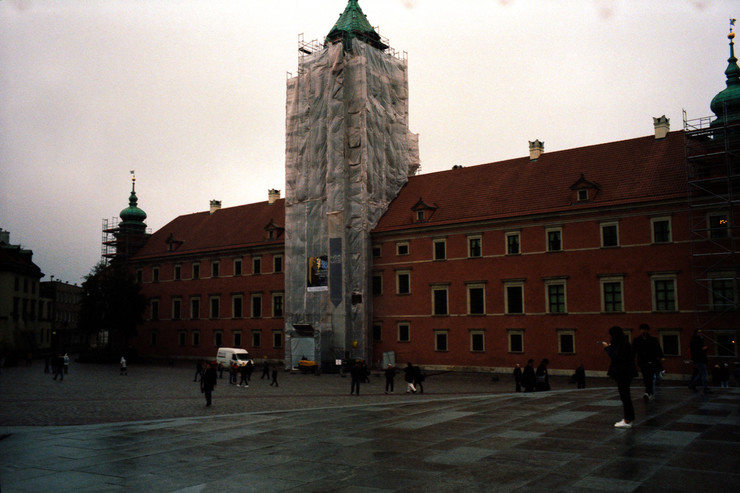
It wasn’t as if it was just the odd building being repaired though - the scaffolding was everywhere at major tourist sites.
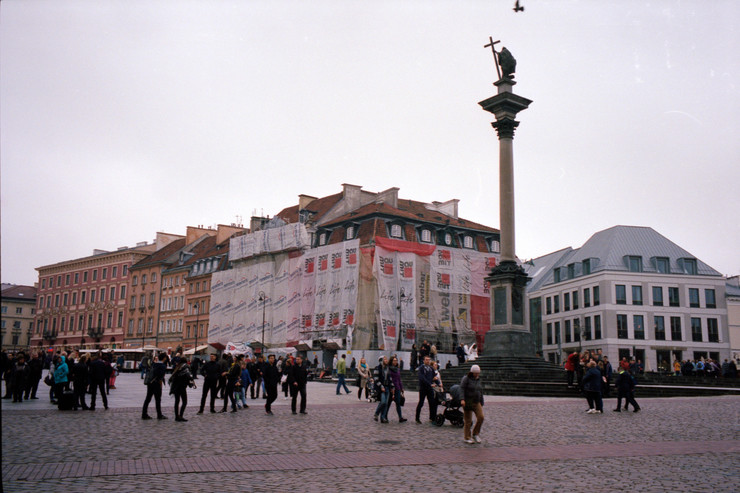
The German army invaded Poland in 1939, and with the invasion came a huge bombing effort from the Luftwaffe. Later, during the Warsaw Ghetto Uprising in 1943, a Jewish resistance force from the Warsaw Ghetto fought back against the shipment of Jews to Treblinka. In 1944 there was another Polish underground resistance uprising called the Warsaw Uprising that fought back against the retreating German army, which was pulling out of Warsaw due to the Red Army advance on the eastern side. As Wikipedia puts it:
During the urban combat approximately 25% of Warsaw's buildings were destroyed. Following the surrender of Polish forces, German troops systematically levelled another 35% of the city block by block. Together with earlier damage suffered in the 1939 invasion of Poland and the Warsaw Ghetto Uprising in 1943, over 85% of the city was destroyed by January 1945
All this adds up to the fact that Warsaw’s so-called old town is actually incredibly new. A large portion of it was rebuilt in the 1950s, and it looks like changes are still happening today. As our free walking tour guide told us, the old town is now entirely the domain of tourists. To me, the idea that we were surrounded by a facade was at first disappointing - having experienced places like Prague and Tallinn - but as soon as you learn why it’s like that, and you start to see the terrible history that Warsaw (and many other Polish cities) have endured, it all becomes clear.
There are museums, large public statues and memorials to the recent historic events, and for those willing to learn you’ll find a lot of quality material. We visited the Museum of the History of Polish Jews which was informative and featured a chronological history, ending with an excellent and thoroughly harrowing section on the Holocaust. Other than museums and monuments however, and the hard-to-miss ghetto wall boundary markers…
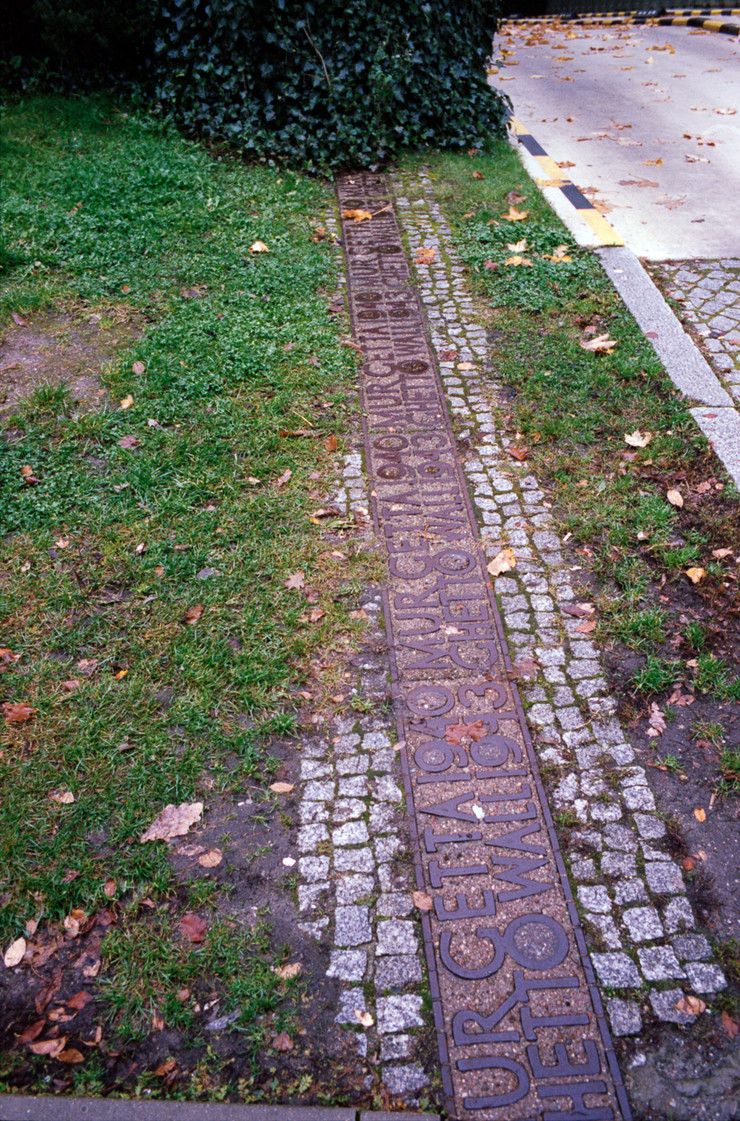
… , the city’s mood is that of rebuilding and improving. A celebration of art and music. Here and there around the old town are plaques describing remaining bits of buildings that weren’t destroyed.
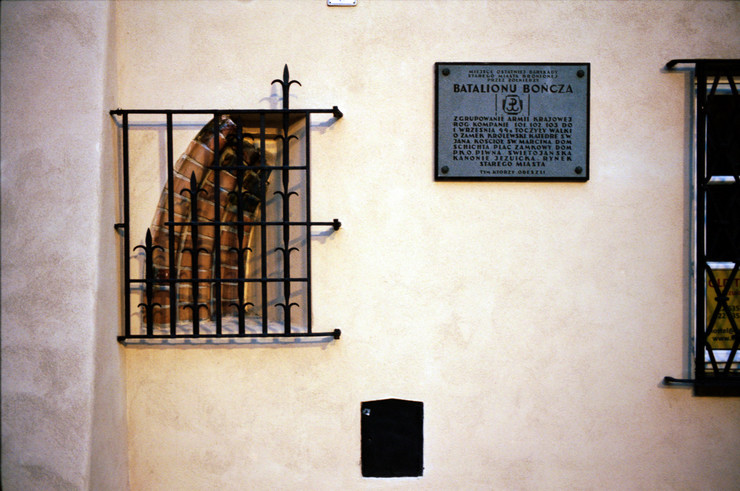
And occasionally you’ll see buildings that have incorporated the rubble into themselves.
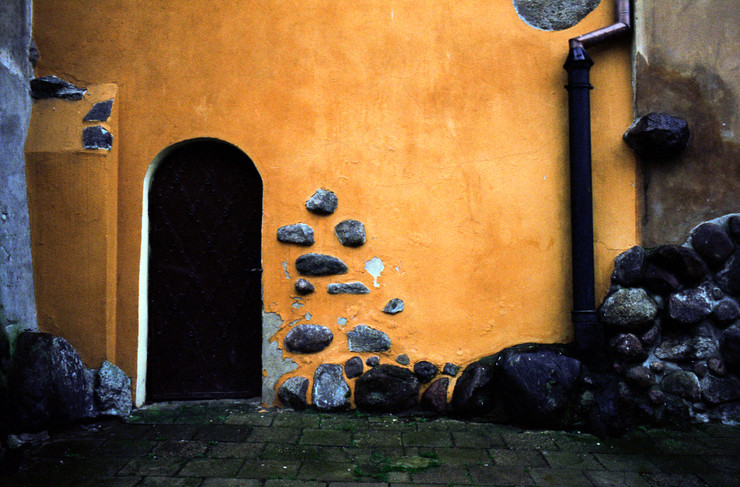
There are also many green areas and parks with art installations and sculptures.
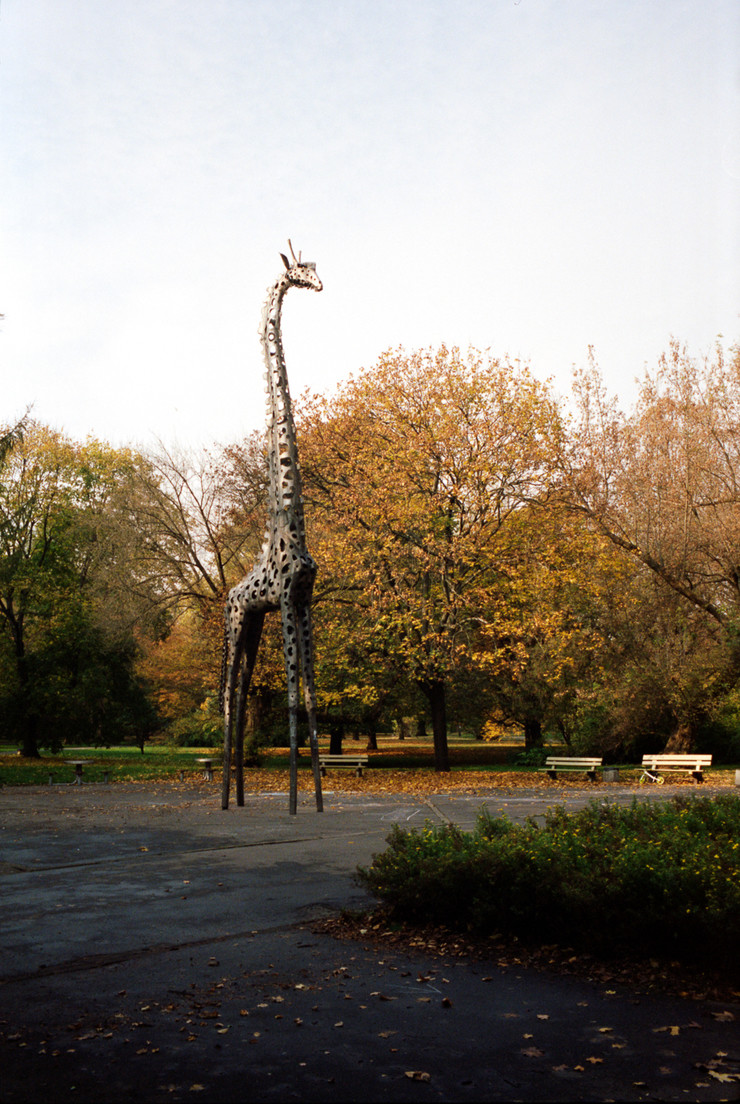
This one was fun - somebody had put a horse chestnut on his head:
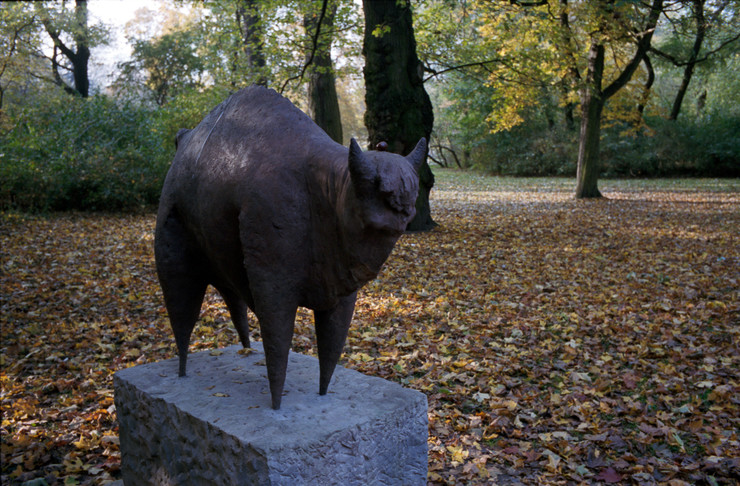
We had arrived during the "golden autumn", and the colours were vivid and beautiful. Leaves had fallen and the squirrels were busy gathering and burying their food for the winter. As a Brit, seeing red squirrels again was unexpected. They used to be our native variety until the invasive grey species evicted them from most parts of Britain. They’re quite rare to see now.
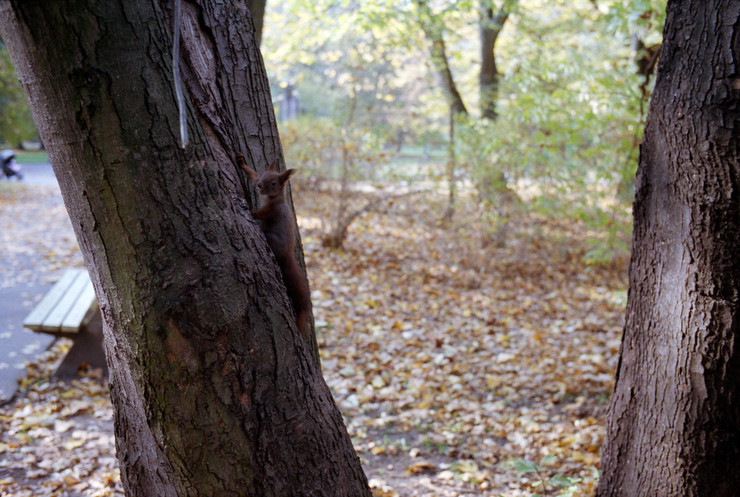
Julia loves the autumnal colours too, and since part of the reason of starting a 52 rolls project is to try and be more creative, I tried to take some photos that either required staging or required more thought than I might put into a simple holiday snapshot.
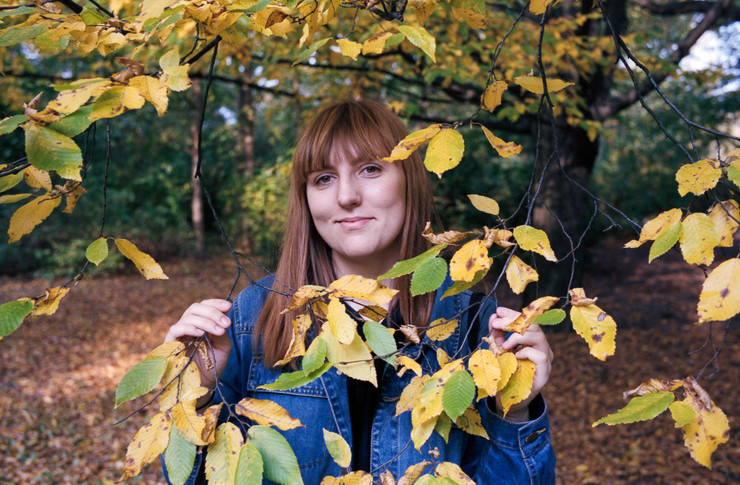
For the picture below I was attempting to use the trees as unconventional frames, but I’m not used to the 35mm focal length and I think the photo would have turned out better with a longer lens. It’s difficult to see the pagoda in the center, and more difficult to see the person feeding the ducks.
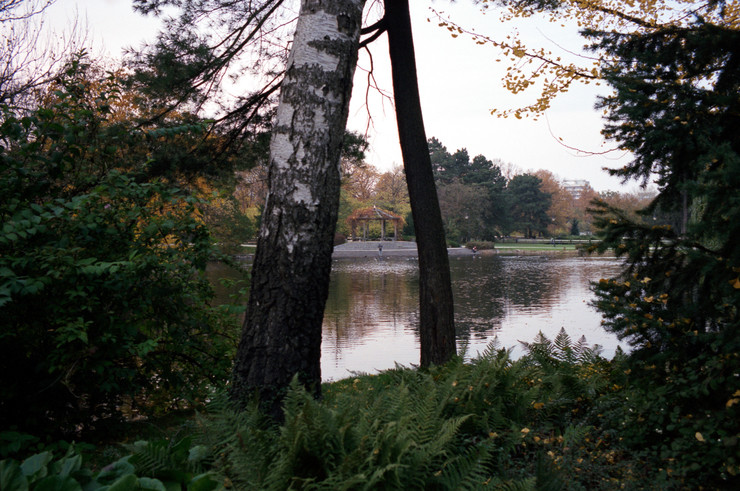
I was also trying to develop my eye. I find that one of the problems I have when out with my camera is that I tend to not take many photos, and the ones I do take tend to all be matter-of-fact recordings. They’re not creative and they don’t evoke anything. When I walked past this guy sitting on a bench, softly playing his guitar, I knew I’d noticed something I wouldn’t usually have seen. The framing of the branches was excellent too. After seeing the result, it’s so close to what I saw, but not quite right. I’m not sure if my rangefinder’s parallax compensation isn’t spot on, or (more likely) that I didn’t pay enough attention, but the branch of the tree is much too close to the guy’s head, and that isn’t what I was intending at all. A minute or two later he packed up and walked away. Lesson learned: if you see a picture that you think could be good, take more than one shot and pay more attention before hitting the shutter.
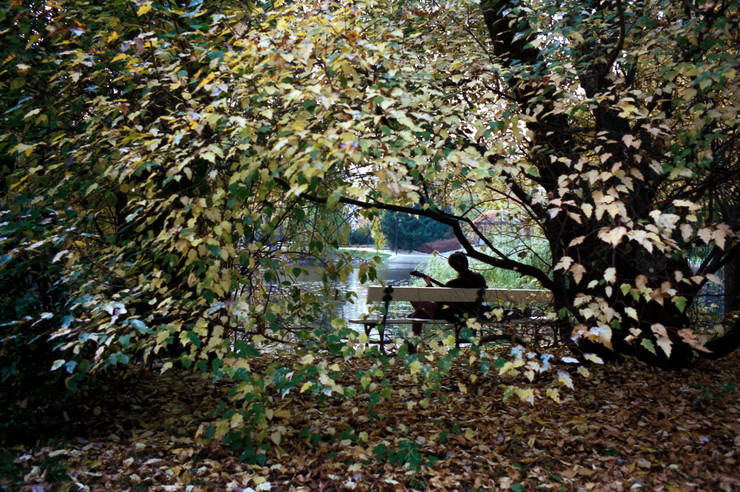
One thing that was particularly celebrated in Warsaw was Poland’s rich musical history, with Chopin front and center.
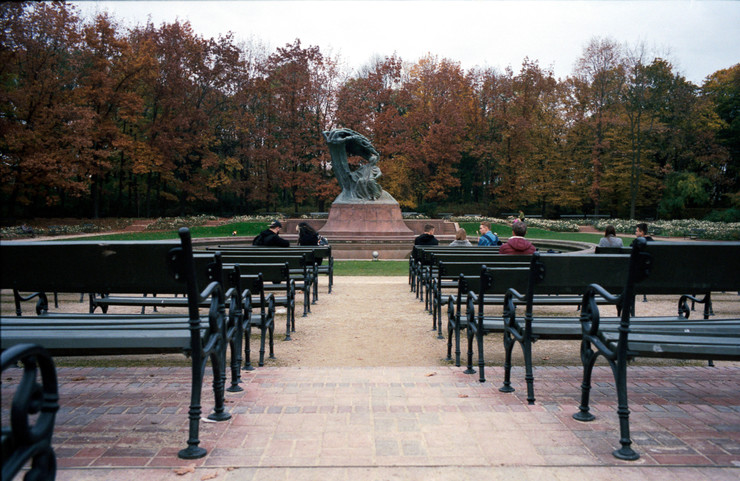
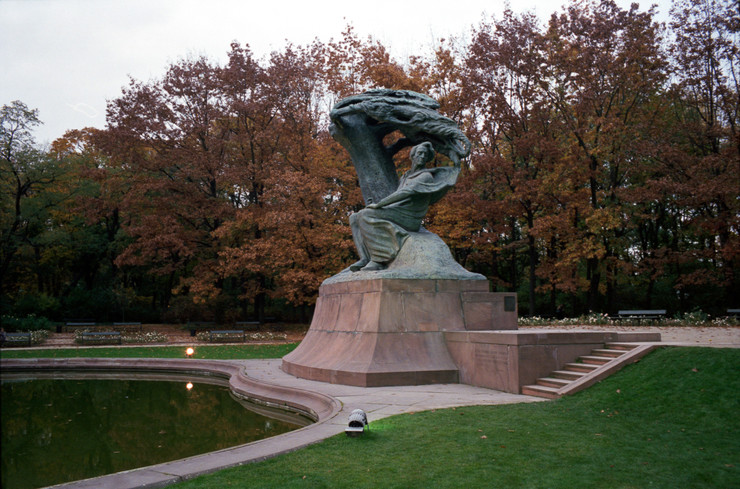
These photos are of the Chopin Statue in Łazienki park. It’s a huge monument, and there’s also a Chopin Museum and regular tourist-targeted Chopin concerts in the old town. They were pretty cheap, so we decided to go to one in the knowledge that it might be lacking substance and a little tacky, but we were both amazed. If you’re in Warsaw please check out Time For Chopin - it’s an excellent and intimate experience sitting two meters from a concert piano inside a gallery with no more than 15-20 other people. It wasn't tacky at all and we both very much enjoyed the experience.
Other things that point Warsaw out as a modern city are the excellent public transport system and the pervasive city Wi-Fi points. We even spotted Wi-Fi hotspots on lampposts next to benches in public parks.
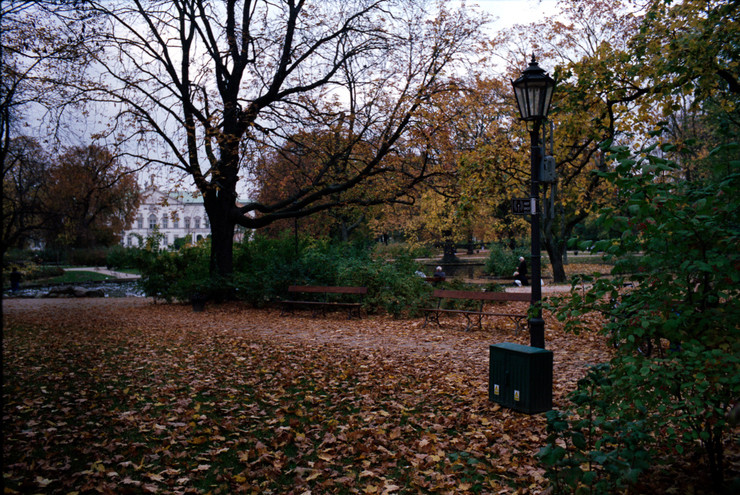
This photo is of one of the trams from the Superia 1600 roll, and it had a really strong colour tint to it that needed quite a lot of correcting.
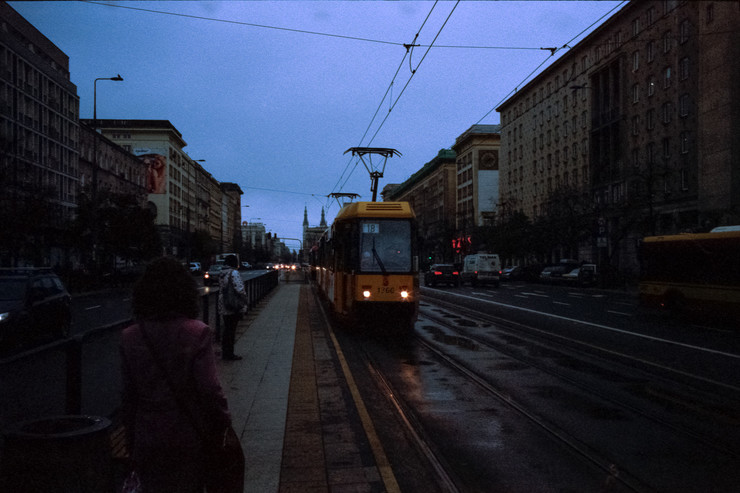
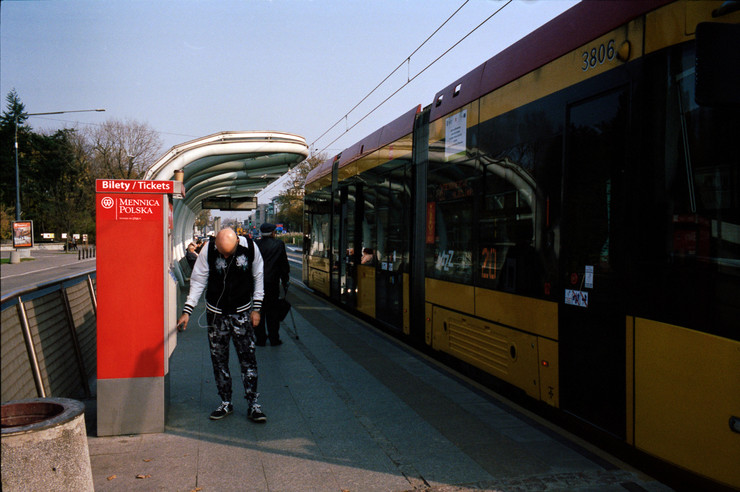
We also had a visit to a jazz club and the M6’s meter did surprisingly well here. This photo was on the portra 400 and was handheld at 1/15th of a second.
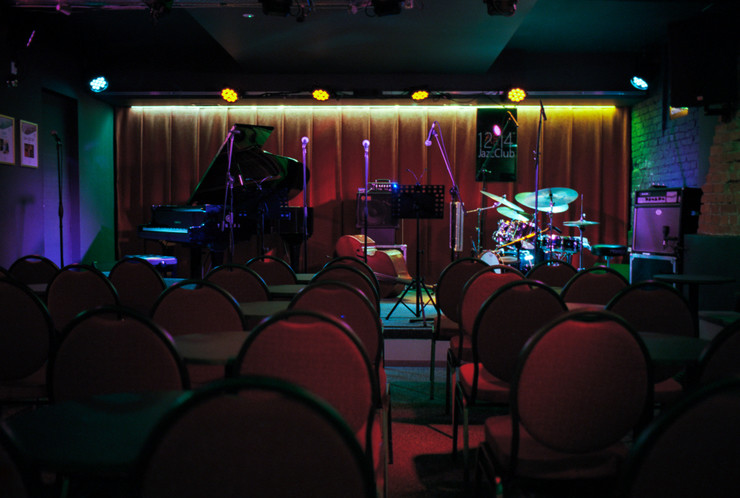
I did however have several other problems with the meter: very bright lights, including the sky, seem to throw it off and cause underexposed photos. I need to learn to be aware of this so I can compensate for it (or meter in a shadow area, because I don’t want to bring a grey card).
That’s enough text for one post - if you’re still reading then be sure to check out Part 2 next week!